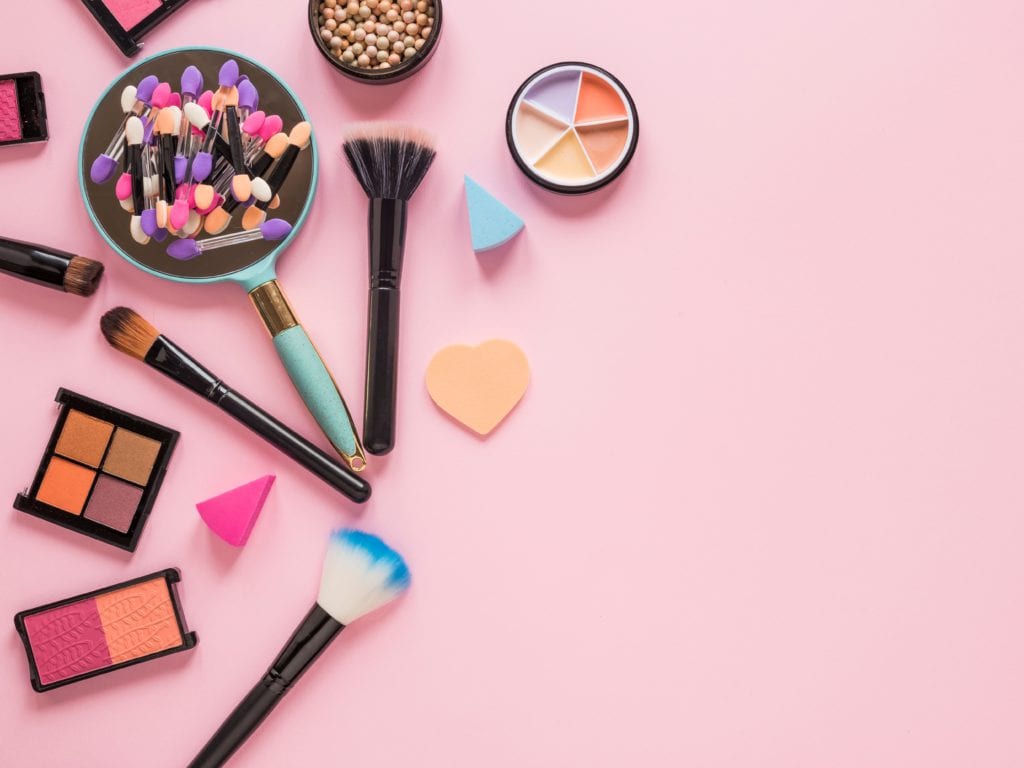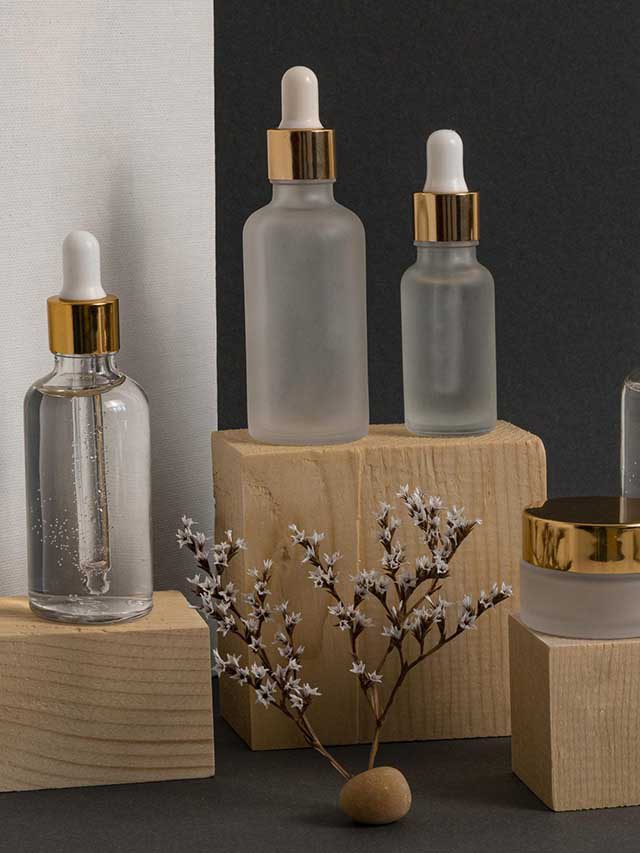Dried mascara, changed textures and crumbling eyeshadow are signs that your makeup has expired. In a perfect world, your favourite shades and skincare serums would last forever. But like food, makeup has an expiration date, and over time cosmetics can harbour harmful bacteria that can lead to very serious infections. Regardless of whether they’re brand new or on their last leg, beauty products do go bad. Even worse, they can cause skin and health problems if not disposed of at the proper time. So what’s the best way of figuring out the expiry period and what can you do to make your beauty products last longer?
TC46 asked Smudg Makeup & Skincare expert Shikha Parekh to address the subject. Here, she talks about the average shelf-life of products, how to figure out their expiry date, and tips that will help your favourites last a long time.
1. What is the average shelf-life of skincare products?
Skincare products, in general, now fall into two categories:
- Natural, Organic or Clean (devoid of preservatives)
- Commercial (having chemicals)
While commercial products come with a longer shelf-life, natural/ organic products that in general do not use preservatives, most definitely have a shorter shelf-life, especially if packaged in jars. They should be recycled and retired once they hit their expiration.
Products with active ingredients or those that contain acids like Salicylic acid tend to have a longer life, but can be potentially harmful if kept beyond their expiry. Therefore, it’s important to toss out products like sunscreens and anti-acne or anti-pigmentation products after they have passed their expiry date. Are you worried about what to do with expired lipstick? Do not worry, we’ve got your back. Check out how.!
Also, packaging makes a difference. For instance, a pump lotion can last more than a year, but a jar that you scoop the product out of is more likely to experience bacterial growth, so they don’t last as long.
As a brief guideline:
- Cleansers: 1 year
- Toners: 6 months to 1 year
- Serums (even with active ingredients like Vit C): About a year, post which they will lose their potency
- BHA or AHA exfoliants: 1 year
- Moisturisers: 1 year
- Lip balm: 1 year
- Sunscreens: Almost 2 years after opening
- Shampoos: Last the longest about 2 years or more
- Sheet Masks: Unopened masks last longer because they are individually packaged. Most last for about 9 months to 1 year
2. What is the average shelf-life of makeup products?

When it comes to makeup, shelf-life is different for different products and can also depend on usage and storage. Generally, opened liquids and creams expire faster since they facilitate bacteria growth. As a rule the more ‘wet’ a product, the more prone it is to bacteria growth and should be tossed out as it hits its expiry. Powders like blush or eye shadow last longer if they are stored and used properly. And using clean brushes is crucial here. This is also true for makeup which has organic ingredients.
As a brief guideline:
- Mascara: Expires by 3 months. The wand is especially prone to attracting bacteria and can cause severe eye infections
- Liquid and cream products like foundation, concealer and cream blush: Expires between 12-24 months
- Powder eyeshadow can be used for 24-30 months
- Face powder can be used up to 24 months
- Lipstick and lipliners expire between 24 months
- Gel or liquid eyeliner can be used up to 12-15 months
As with skincare products, makeup products, especially on the packaging, also come with a ‘jar’ symbol and number which tells you how long the product will be good for after opening or first usage.
3. Where on the bottle or packaging is the expiry mentioned?
Most commercially available products do and should have a number and a jar symbol on the packaging. It is usually printed on the bottom of the bottle or on the back of the label depending on different brands. Even the DTC or ‘home-grown’ brands that sell directly to the end consumer need to have this symbol.
The number may read 6,12, 24 or 36, and this is the number of months your product is meant to last after it’s opened. For instance, if you see ‘24M’, the product is good for 24 months.
If the product doesn’t have this symbol on the container, one-to-two years is a good rule of thumb for the shelf-life. Even opened-but-unused products should be tossed post that.
4. Can you use a product past its expiry if it was never opened?
Unopened products will last longer than opened products because they have less chance to be exposed to bacteria but can lose their potency and effectiveness or alter over time, which may be potentially harmful to your skin. As a general rule, it’s best to avoid using products past their expiry.
5. What are some signs your makeup has gone bad?
General signs your products have gone bad are :
- The product smells funny
- The product doesn’t feel like it did when you first started using it
- The product starts changing colour. This is true for products like SPFs, lipsticks, cream blushes
- The product changes its texture or consistency – becomes either runny or too thick. This is true for products like serums, face oils, liquid foundations
- Your skin suddenly and uncharacteristically starts reacting – burning sensation, redness, rashes or breakouts
Vitamin C
Any pure form of vitamin C is super unstable. As soon as it comes in contact with air, sunlight or heat, it starts breaking down and loses it’s potency and effectiveness and starts to turn yellowish-brown in colour. That’s when you know it has reached its end.
Face Serums
Most face serums on turning bad will change their colour, consistency or even start smelling funny.
Eyeshadow
If the colour pay-off is not how it was when you first bought it or the eyeshadows appear lighter, darker or chalkier, it’s time to toss it.
Eyeliner
Eyeliners, especially the wands or brush tips, collect bacteria the fastest when in use, as they come in direct contact with eyelids. When they turn bad, they don’t spread as easily, or develop white spots or run dry.
Sunscreen
Sunscreens usually have chemicals which tend to make them last a bit longer. And expiry dates differ from brand to brand. You can find out if your sunscreen has turned bad by looking at its colour and consistency.
Mascara
It’s always a good idea to toss off your mascara after 3 months of usage, as it breeds more and more bacteria each time you use it. A mascara gone bad will dry up really fast, start clumping or can smell funny. Although a sure way to conclude if your mascara has gone bad is if you get an eye infection immediately post usage!
Foundation
The simplest way to find out if your foundation has turned bad is by looking at changes in the colour and consistency or if the oil in the formulation starts separating.
6. Do certain formulas have a longer shelf-life than others?
Powders tend to collect fewer bacteria and last the longest. Liquid formulations are breeding ground for bacteria, especially if you are using unclean brushes or tools. They tend to go bad a lot faster. Oils, especially the organic or pure face oils are potent but fragile and can start reacting when they come in contact with air or direct sunlight.
7. How can you extend the shelf-life and maintain the health of your beauty products?
Read the usage and storage instructions carefully. Go for products that are stored in a bottle with a pump, instead of a jar. If you must use a jar, use a spoon or a wooden stick to scoop the product out. Avoid using your fingers. Always use clean fingers to apply any skin product. For makeup products, cleaning brushes after every use is a must.
8. What are some storage tips for skincare products?
Store in a cool, dry place, away from direct exposure to sunlight. If you live in a tropical, humid climate (like Mumbai), try and keep your creams and serums in the refrigerator, not the freezer.
9. What are some storage tips for makeup products?
Makeup products also benefit from being stored in the refrigerator – especially your lipsticks, liquid lipsticks, liquid foundations or cream blushes, to avoid bacteria breeding on their surfaces. Powder-based products can be stored in a cool, dry place with their lids firmly fixed after every use.
10. Can products be revived if they’ve changed consistency but are within expiration date?
It possible at times, but not recommended, to revive the product if they have lost their original consistency. Common practices involve adding a few drops of oil (almond or olive), or thinners to products like matte liquid foundations, liquid lipsticks, mascaras if they have dried up. If within their expiry, it may work, although, change of consistency usually is not a good sign and may cause skin problems on continued usage.
11. Do you need a beauty freezer? Which products benefit from being stored in the fridge?
Beauty freezers are great if you have the luxury and space to buy them. Although normal refrigerators work just as well. Almost all products can be stored in a beauty freezer. At Smudg, we mostly store any product we try, test or use in our refrigerator. Personally, I love the ‘cool effect’ and it maintains the product in its original form.


